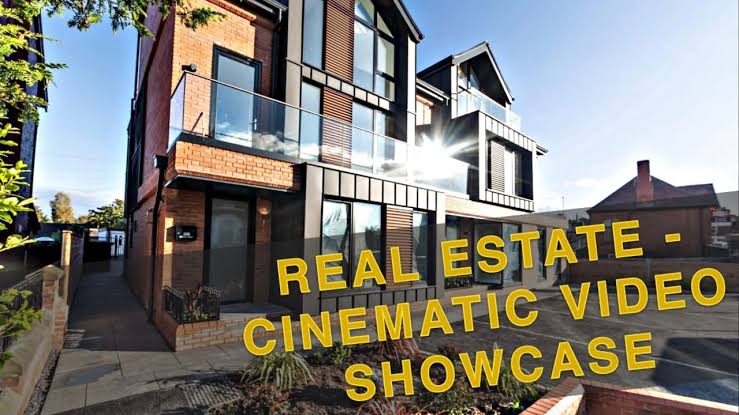Explore the power of real estate videography to enhance property listings. Learn how to effectively plan, shoot, and edit videos that showcase properties, engage potential buyers, and boost visibility. Discover key techniques and best practices for creating compelling real estate videos.
Real Estate Videography: Showcasing Properties
In the competitive realm of real estate effective marketing strategies play a role, in attracting potential buyers and leaving a lasting impression. One of the most impactful tools in this regard is real estate videography. This medium provides a dynamic approach to showcasing properties offering a more engaging and immersive experience than static photos alone. In this comprehensive guide we will delve into the essentials of real estate videography its benefits key techniques and best practices for creating high quality property videos.
Recognizing the Advantages of Real Estate Videography
Real estate videography serves as a marketing tool that presents advantages over methods. One key benefit is the capability to craft a virtual tour of a property. This allows prospective buyers to explore the home in a way that photos simply cannot match. They can observe the layout, flow and spatial connections between rooms which aids them in envisioning themselves living in the space.
Another notable benefit is the chance to showcase the aspects of a property and its selling points. Whether it's a spacious backyard, a contemporary kitchen or unique architectural features video provides a way to present these elements. Dynamic visuals and seamless transitions can highlight the properties qualities and forge a connection, with the audience. Moreover video content tends to outshine formats on media and real estate platforms. Its ability to grab attention and encourage sharing enhances the properties reach. Additionally search engines prioritize content boosting the visibility of property listings in searches.
Planning Your Real Estate Video Shoot
A successful real estate video starts with careful planning. Before you begin filming it's important to understand the properties key features and the message you want to convey. Here are some steps to consider during the planning stage.
1. Define Your Goals. Decide what you want to achieve with the video. Are you looking to showcase the layout of the property its unique features or the neighborhood? Having goals will guide your filming and editing choices.
2. Create a Shot List. Make a list of shots you want to capture. This could include views, shots of rooms special features and details that make the property stand out. A well organized shot list ensures you get all the footage and streamlines the editing process.
3. Prepare the Property. Before filming make sure the property is clean, well lit and staged to showcase its best attributes. Clear away clutter and arrange furniture to create an inviting ambiance. Proper preparation can greatly influence the quality of the final video.
Scout the Location Beforehand: Take a trip to the property prior to shooting to plan out your angles and identify any potential obstacles. This allows you to envision how each shot will turn out and make any necessary adjustments to your shooting plan.
Tips for Effective Real Estate Videography
The quality of your real estate video depends on the techniques you employ during filming. Here are some key techniques to keep in mind.
Utilize a Stabilizer: To achieve footage that looks professional use a stabilizer or gimbal. These tools help minimize camera shake and ensure that your video has a smooth fluid appearance.
Incorporate Lenses: Wide angle lenses are essential for capturing the view of a room and making spaces feel more open. However it's important to use them sparingly to avoid distortion and accurately represent the property.
Make Use of Light: Natural light can greatly enhance the visual appeal of your video. Shoot during daylight hours when there's light available and position your camera to maximize its effect. Avoid shooting directly into bright light sources as this can create shadows and diminish video quality.
When it comes to filming real estate videos its important to pay attention to shot composition. Techniques like using lines and framing can help create visually appealing footage. Make sure to position yourself at level to give a perspective of the space. Adding movement, like pans and tilts can make the video more engaging and guide viewers through the property smoothly.
Now let's talk about editing your real estate video. This step is crucial in bringing everything together. Good editing can improve the quality of the video and effectively convey your message. Here are some tips to keep in mind.
Firstly aim for a video length that keeps viewers interested without overwhelming them. Generally a duration of 2 to 3 minutes works best for real estate videos. Focus on showcasing the features of the property.
Next use transitions between shots to ensure a viewing experience. Steer clear of transitions that might distract from the properties highlights.
By following these guidelines you can create an impressive real estate video that captures attention and highlights the properties charm.
Incorporating Music: Select background tunes that match the property's vibe and the video's mood. Music can establish the atmosphere and enrich the overall viewing experience. Make sure the music is free or properly licensed to steer clear of copyright complications.
Including Text and Graphics: Utilize text and visuals to convey information such as property specifics, contact details and calls to action. Keep the text straightforward and brief for readability without distracting from the visuals.
Optimizing for Platforms: Take into account the platforms where the video will be shared and adjust the format accordingly. For instance social media sites may require aspect ratios than real estate websites.
Real estate videography presents an opportunity to showcase properties and engage potential buyers. By recognizing its advantages planning effectively using filming techniques and adhering to editing best practices you can produce top notch videos that emphasize a properties features and leave a lasting impression in the real estate industry.
